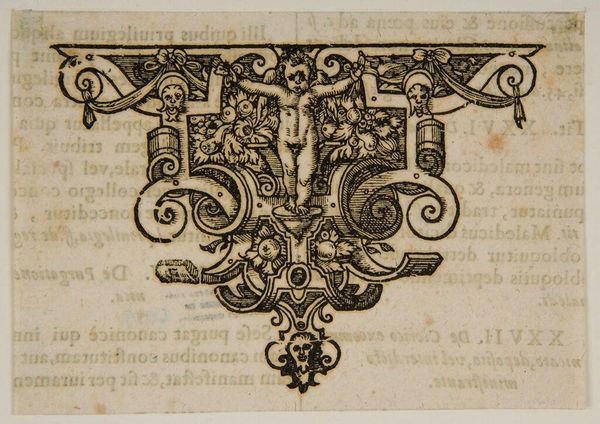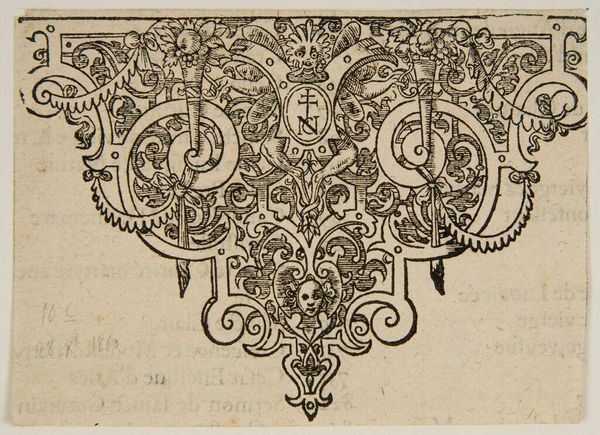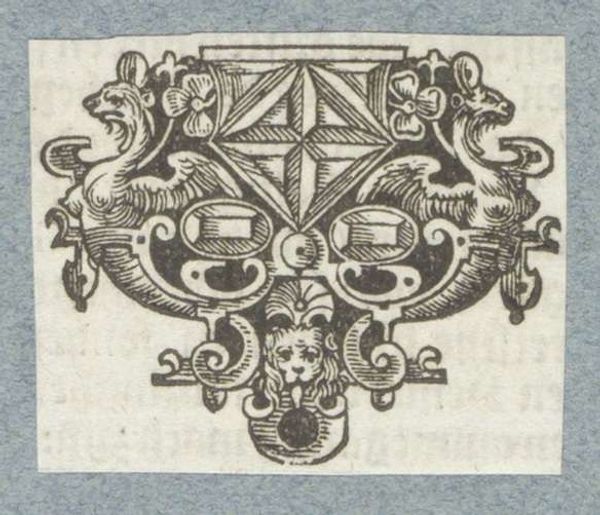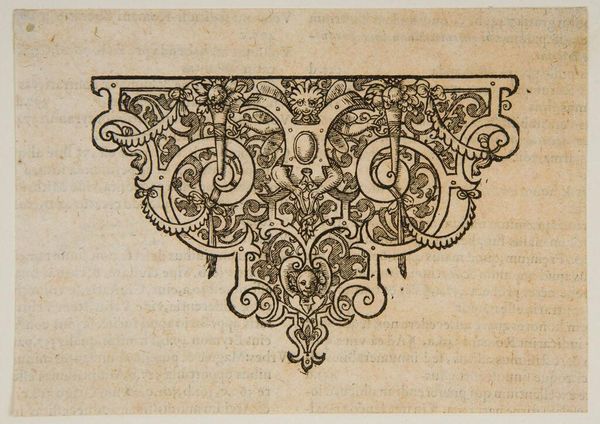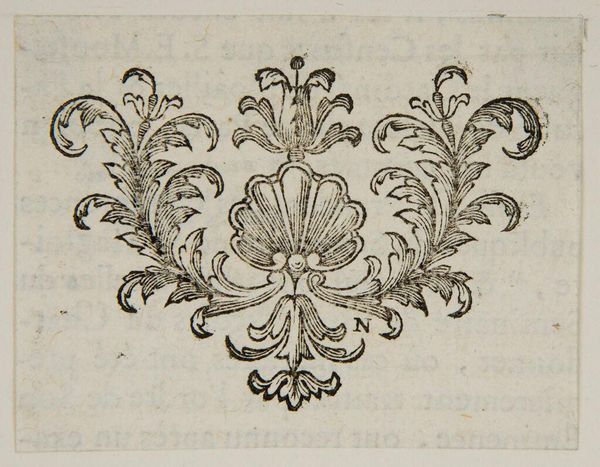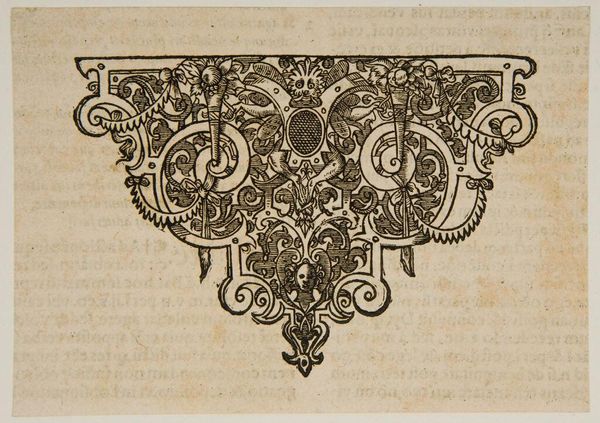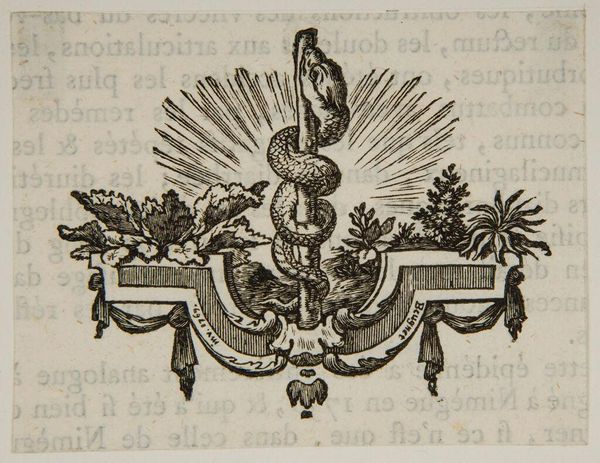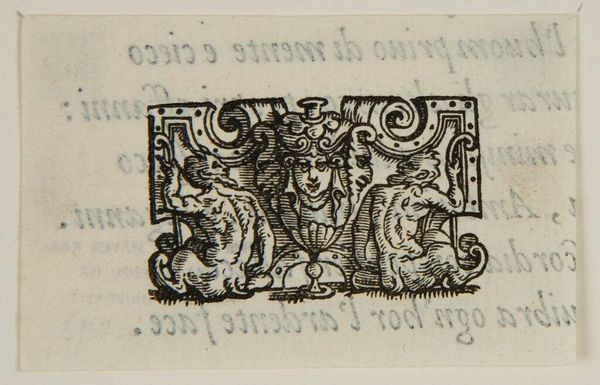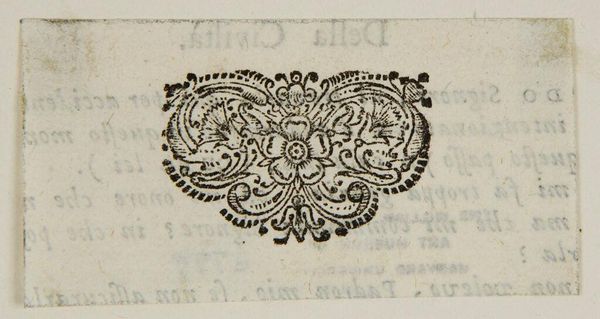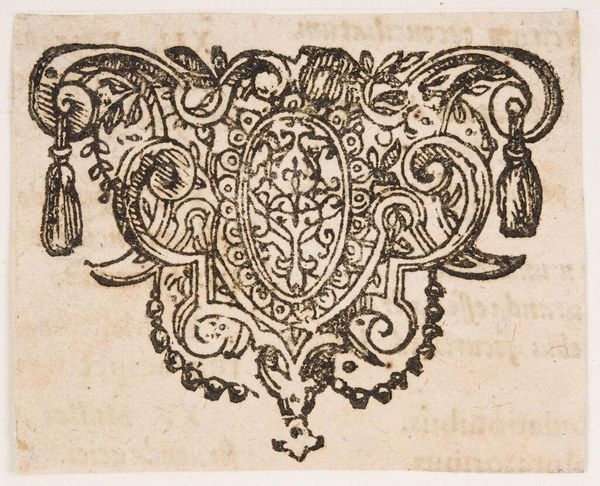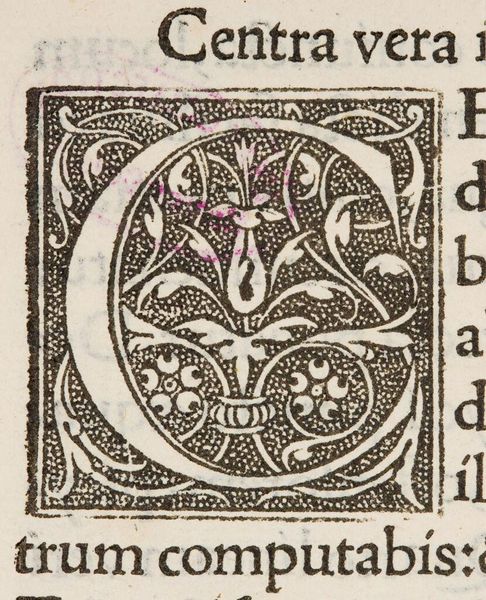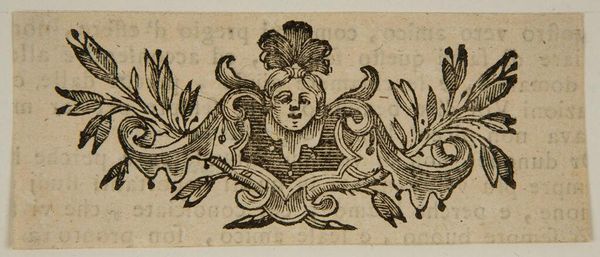
Copyright: CC0 1.0
Curator: This striking head-piece, of unknown date and artist, presents such an intriguing set of questions about its role in the visual culture of its time. Editor: It gives me a feeling of ornate heaviness. The density of the black ink and swirling shapes are overwhelming and darkly beautiful. Curator: I think we can consider the imagery—the grotesque faces, the stylized foliage—as reflecting contemporary anxieties about power, gender, and the human form. How might this ornament participate in debates about social order? Editor: And what about the material? The texture suggests a woodcut or engraving, a medium of mass production. Was this design intended for elite consumption or wider circulation? Did the labor involved affect the value placed on this image? Curator: Precisely. These objects were rarely neutral. The head-piece acted as a marker of authority, or even resistance, depending on the context in which it was used. Editor: Seeing how materials and social forces intertwine opens up ways of understanding art’s impact. Curator: Absolutely, by viewing such objects as cultural tools, we begin to understand art history as a site of dialogue.
Comments
No comments
Be the first to comment and join the conversation on the ultimate creative platform.
